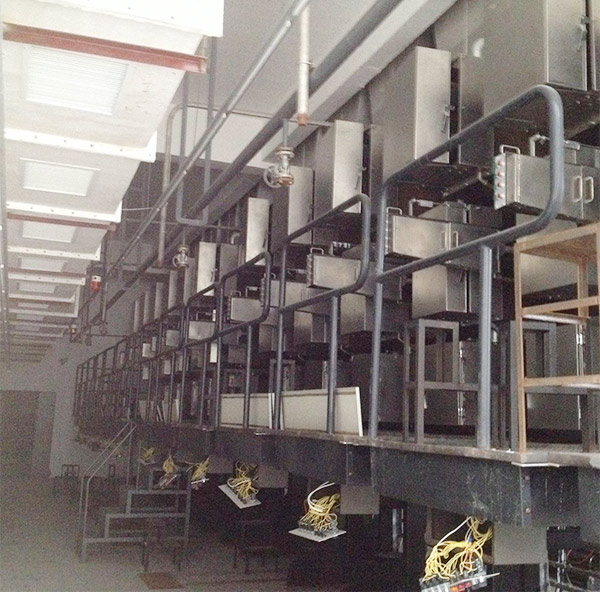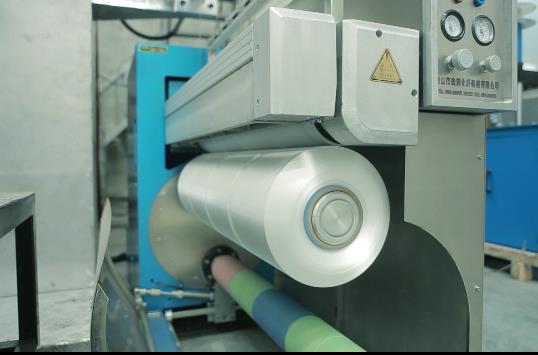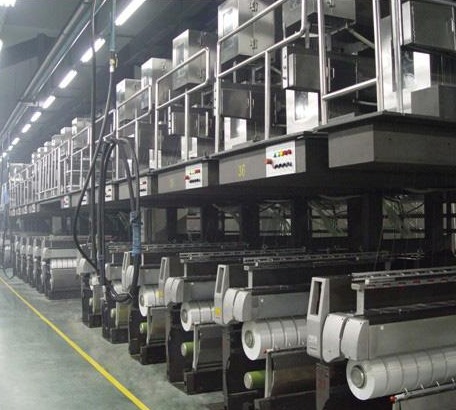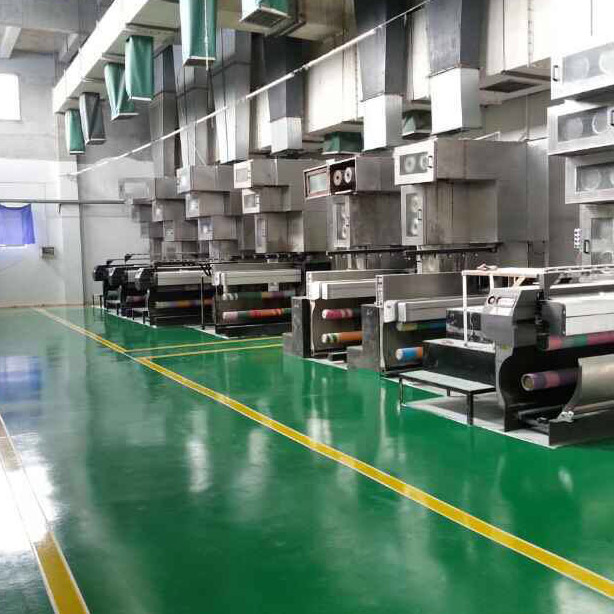- Polypropylene spinning machine
- Polypropylene FDY equipment
- Polyester POY spinning machine
- Polyamide FDY common and high strength equipment
- Polyester FDY equipment
- Polyester high strength equipment
- polyester、Polyamide、 Polypropylene BCF equipment
- Small spinning machine
- All kinds of spinning special parts
- Polypropylene FDY spinning machine is a key equipment for the production of high-performance fibers
- Several silk textile industry renewal projects in Shengze have started construction
- The Winter Solstice marks the rise of Yang energy. In Fubon spinning machines, the Winter Solstice code is revealed, a dialogue of craftsmanship spanning a thousand years
- The establishment conference of Guangzhou Modern Textile and Garment New Quality Productivity Research Institute and the co-construction conference of the textile industry innovation ecosystem were held
- The key points of control in the polypropylene FDY spinning machine process and their relationship with quality

- Contact:Mr. Huang Guofu
- Cel:0086-13901505556
- Fax:0086-519-83341119
- Email:czfb5556@126.com
- Add:No. 288-8 ChangLi Rd, Huangli Town, Changzhou, JS PRV.
Textile News
According to a report from the United Nations Conference on Trade and Development (UNCTAD), shipping demand has soared recently, but shipping capacity has not kept up. This has led to rising shipping costs. From now to 2023, if container freight rates continue to soar, the global import product price level will rise by 10.6%.
The strong return of artificial silk
Recently, imitation silk fabrics have begun to be "just about to move" in the market. According to feedback from manufacturers, the delivery of artificial silk grey cloths has been enlarged, especially for chiffon, ramie, and smooth crepe. The person in charge of a professional manufacturer of artificial silk said that the conventional 75D 24T chiffon is very popular. The factory had a high inventory before, with more than 3 million meters of inventory. Part of it has gone this month, and it has dropped to more than 2 million meters. Not in the first three quarters.
A month ago, a boss who was mainly engaged in the foreign trade of artificial silk said that there was no order, and the sales of artificial silk had been in the off-season. But now he finally smiled and said that he had received several new orders this month, which would last until the end of the year.
The order of imitation silk has changed from scratch, indicating that this type of fabric is being welcomed by the market. As we all know, from November to April of the next year is the peak season for silk simulation. According to the current situation, a lot of orders will be harvested next year.
Spring and summer fabrics may usher in the peak season
In addition to its own peak season, another factor that cannot be ignored is the influence of temperature. As early as October, there was news that this year will lead to a cold winter due to the La Ni愀 climate, but so far, the Jiangsu and Zhejiang regions have not felt the cold. Therefore, this not only reduces the time we spend wearing heavy winter clothes, but more importantly, the motivation to buy winter clothes is also insufficient. Especially in the early Spring Festival, the display time of winter clothes in clothing stores was further reduced.
The advancement of the Spring Festival will also advance the launch of spring clothing, so it will inevitably leave plenty of space for spring and summer clothing. The extension of the spring and summer clothing sales cycle in the coming year will surely drive the growth of spring and summer clothing sales, and the related textile fabrics will also become popular. In October, some companies received orders for the spring and summer of next year, such as the four-way stretch that has been selling well. Most of the orders are for thin single-layer four-way stretchers instead of thick double-layer four-way stretches.
The improvement in the market of artificial silk may only be a warm-up, because many people do not realize that the sales time of spring and summer clothing will be extended next year, and the sales of clothing and fabrics will increase. However, in the current consumer trend, in the era of "individualized" demand, it is difficult to "trade price for quantity". Therefore, it is unlikely that the artificial silk wants to return to the previous "quantity and price win".
Dark clouds in the polyester market
Recently, the price of polyester raw materials has plummeted due to power curtailment and production restrictions in various places in the chemical fiber industry, and the violent fluctuation of coal prices for bulk textile raw materials.
Recently, the new crown epidemic in Europe has continued to worsen, and the market has intensified concerns about the European blockade. The decline of crude oil once again made the polyester market worse. On the 18th, crude oil prices began to fall sharply, and WTI crude oil prices fell to 78.36 US dollars/barrel. This was the first time that WTI crude oil fell below the 80 US dollars/barrel mark in the past three weeks. The crude oil market plummeted again on the evening of the 20th. WTI crude oil futures closed down 2.47 US dollars, or 3.15%, to 75.94 US dollars per barrel. Brent January crude oil futures closed down 2.35 US dollars, or 2.89%, to 78.89 US dollars per barrel. Since October, under the oversupply of fundamentals, the polyester market price has continued to fall.
Increased difficulty in de-stocking in the polyester industry chain
At the same time, both the inventory of terminal weaving enterprises and the inventory of polyester filament factories have risen sharply recently, indicating that the difficulty of destocking in the industrial chain has increased, and the corresponding enthusiasm for purchasing raw materials will be seriously insufficient. At present, orders for Christmas and "Double Twelve" have been basically completed. At present, polyester terminal enterprises are all meeting rigid demand for production, and the market lacks enthusiasm for hoarding goods. Especially in the context of tightening fiscal policies and superimposing epidemic prevention and control, terminal orders are unlikely to improve in the near future.
Due to limited power and terminal orders, the overall starting load of the polyester industry was lower than the same period last year. As of November 12, the start-up load of polyester chips, polyester bottle flakes, polyester filament, polyester industrial yarn, and polyester staple fiber industries were 84.69%, 74.22%, 77.59%, 63.8%, and 77.21%, respectively.
At present, entering the winter, the terminal weaving industry has reached the peak season for winter equipment and goods, and there is a seasonal pick-up in the starting load, and with the steady increase in power supply, there is also a certain increase in the starting load of polyester enterprises. However, the “dual control” of energy consumption in East China continues, and the operating loads of terminal weaving and texturing enterprises are lower than the same period in previous years.
Although the prices of many domestic raw materials have fallen to varying degrees, many polyester companies are still unable to do anything. Some weaving companies said that the primary problem facing companies at present is that market demand continues to be weak. It is useless to reduce the price of raw materials without orders. Judging from the adjustment of the national industrial structure, whether it is the polyester market, the raw material market, or the end users, they are all in a serious surplus stage. We have already overdrawn the future market, and ultimately we have to pay for the overdraft.
Disclaimer: This article is organized from the Internet, and the copyright belongs to the original author; if there is any infringement, please inform it in time and delete it after verification.
- Several silk textile industry renewal projects in Shengze have started construction
- Polypropylene FDY spinning machine is a key equipment for the production of high-performan
- The Winter Solstice marks the rise of Yang energy. In Fubon spinning machines, the Winter
- The establishment conference of Guangzhou Modern Textile and Garment New Quality Productiv
- The key points of control in the polypropylene FDY spinning machine process and their rela
- A Guide for Managers to Break Through: Empowerment Rather than Control: Helping Enterprise
- The 2025 Textile and Garment Innovation Annual Conference and the Gongqingcheng Down Indus
- The technological upgrade of polypropylene FDY spinning machines empowers the production o
- Textile News: Full-chain Efforts + Cross-border Breakthroughs + Talent Foundation - The Te
- The 2025 China Home Textile Fashion Innovation Conference grandly kicked off in Binzhou




